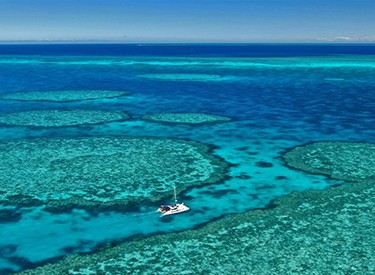10 lesser-known reefs of the Great Barrier Reef
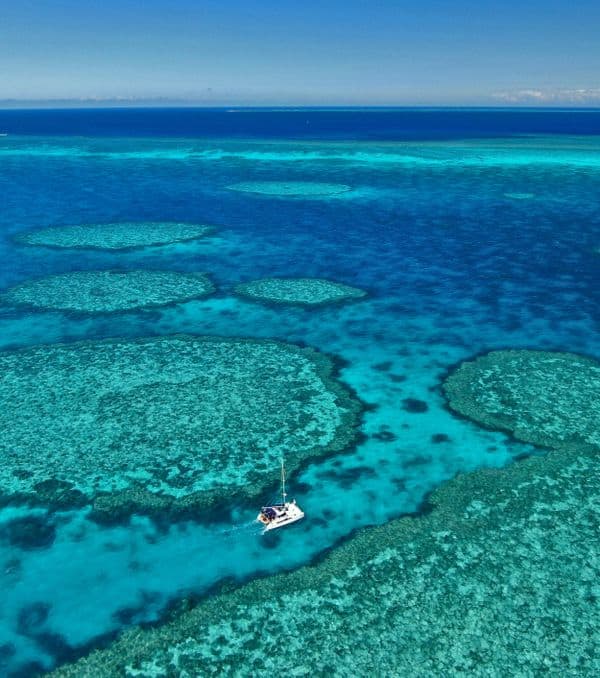
Fitzroy Reef. Image courtesy of Johnny Gaskell @johnnygaskell
Queensland’s own Aquaman, Daydream Island Master Reef Guide Johnny Gaskell has visited over 200 reef sites in the Great Barrier Reef Marine Park over the last two years.
He has offered up his top ten reefs on Queensland’s Great Barrier Reef – a bucket list of lesser-known reefs for those eager to explore beyond the popular dive sites.
Famous for the exploration of Queensland’s own Blue Holes, Johnny is on a personal mission to travel the length of the Great Barrier Reef to survey its health.
- Sudbury Reef, Cairns (Tropical North Queensland)
Sudbury Reef is tucked behind Fitzroy Island off the coast of Cairns in Tropical North Queensland with a white sand cay at its northern end. From steep drop offs to shallow clam gardens – Sudbury Reef offers a variety of snorkel and dive spots.
How to get there: Join Coral Expeditions’ Outerknown Adventures of the Great Barrier Reef cruise which will take you to the remote and untouched northern parts of the Reef, including Osprey, Ribbon and Sudbury Reefs. The 7-night cruise departs Cairns. If you’re a confident skipper and you have your own boat license, charter your own vessel with NQ Hire Boats from Cairns.
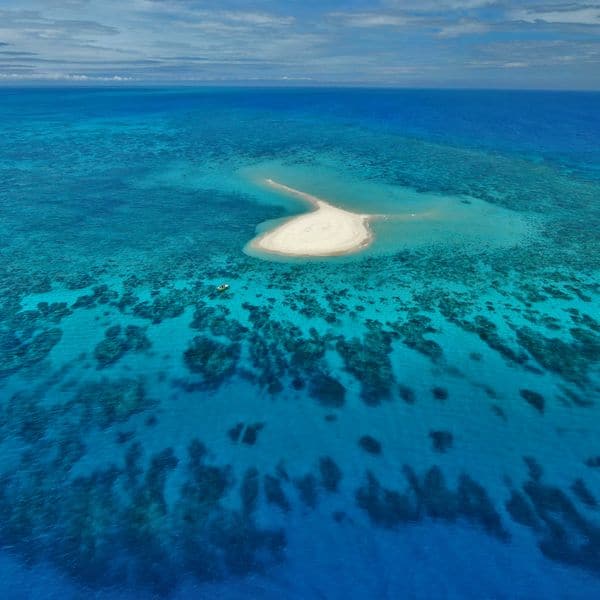
Sudbury Reef. Image courtesy of Johnny Gaskell @johnnygaskell
- Little Baron Reef, Yeppoon (Capricorn Coast)
Little Baron Reef is one of over 1,000 separate coral reefs within the Swain Reefs National Park, located just 200 kilometres off the coast of Yeppoon. Loggerhead turtles, hard corals and even Humpback whales can be found here.
How to get there: Adori Charters offers diving, fishing and research expeditions to the Swains Reefs National Park, including Little Baron Reef.
- Kangaroo Reef, Bowen (The Whitsundays)
Kangaroo Reef (East) sits inside a protected green zone offshore from the small seaside town of Bowen at the top of the Whitsundays region. The reef has a channel running through its middle, creating a spectacular drop-off.
How to get there: Kiana Sail and Dive offer private charters to the reefs in the Whitsundays, including Kangaroo Reef, on board MS Kiana – a fully equipped scuba dive vessel.
- Unnamed Reef, Yeppoon (Capricorn Coast)
This little gem is part of the Swains Reef National Park – a large collection of small reefs, most of which are unnamed. Unnamed reefs can be located with the help of the reference maps provided by the Great Barrier Reef Marine Park Authority (GBRMPA). The GBRMPA reference for this particular reef is 21-227. It is located roughly 280km offshore Yeppoon. “This particular reef had spectacular swim throughs, caves and coral cover that was inhabited by a high diversity of fish species and a few species of friendly sharks,” says Johnny. “The underwater topography at this site was unbeatable with dramatic walls and gutters for deep swim throughs.”
How to get there: Adori Charters offers diving, fishing and research expeditions to the Swains Reefs National Park, including Unnamed Reef.
- Fitzroy Reef, Great Keppel Island (Capricorn Coast)
Fitzroy Reef is the largest of 22 Reefs that form the Capricorn and Bunker groups in the Southern Great Barrier Reef. This site is popular with divers and snorkelers because the reef forms a ring around a large, deep lagoon that offers protection and anchorage points. Johnny vividly remembers this lagoon. “It was an amazing light blue colour with reefs scattered throughout. The highlight was the coral slopes near the channel entry to the lagoon. The slopes were completely covered in tightly compacted diverse hard corals with lots of fish life, particularly parrotfish. It reminded me of some of the spectacular sites right up the top of the Great Barrier Reef, near Raine Island.”
How to get there: Departing from Great Keppel Island, off the coast of Yeppoon, Keppel Dive offers day and overnight tours to the surrounding reefs, including Fitzroy Reef.
- Tiger Reef, Bowen (The Whitsundays)
Tiger Reef is a semi-exposed reef east off the coast of Bowen in the Whitsundays, right next to Kangaroo Reef. “We were excited to visit Tiger Reef because firstly – it’s called Tiger Reef – and secondly, it is close to the path Cyclone Debbie took in 2017, so we were very interested to see if the protected side still had coral cover,” Johnny explains. “We were relieved to find that it was in great condition and had barely any cyclone damage.”
How to get there: Kiana Sail and Dive offer private charters to the reefs in the Whitsundays, including Tiger Reef.
- Briggs Reef, Cairns (Tropical North Queensland)
Briggs Reef is a smaller reef sitting snugly between the larger Moore and Sudbury Reefs near Fitzroy Island off the coast of Cairns. “I was blown away by the variety of coral on the reef walls and bommies. Compared to other sites, Briggs Reef has a very high hard coral cover and we saw a few turtles and small sharks,” says Johnny. “The site was a real surprise to me. Being so close to Cairns, it’s a great spot for novice or advanced divers,” he adds.
How to get there: Many live aboard dive operators visit the reefs near Briggs Reef, including Coral Expeditions, Divers Den and Reef Encounter. It is best to check the individual operator’s itineraries as they are tailored to weather conditions, currents, and tides. If you are a confident skipper and you have your own boat license, charter your own vessel with NQ Hire Boats from Cairns.
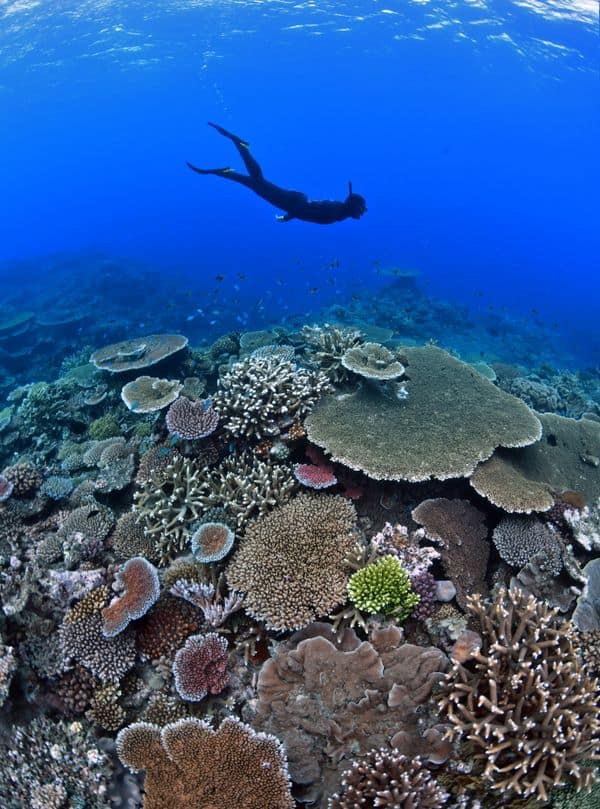
Briggs Reef. Image courtesy of Johnny Gaskell @johnnygaskell
- Secret Reef, The Whitsundays
Not ready to reveal the location of this particular reef, Johnny smirks and says “It’s always good to keep a secret or two.” “It’s a spectacular system of lagoons with very high coral and fish diversity. It’s very delicate but an incredible ecosystem not too far from one of the more popular dive sites in the Whitsundays,” he hints.
How to get there: “One of the local dive operators is working on incorporating this location into his tours, so hopefully you’ll see me back here very soon,” says Johnny.
- Elisabeth Reef, The Whitsundays
On the outer edge of the Great Barrier Reef Marine Park in the Whitsundays (approximately 110km north of the Whitsunday Islands) sits Elisabeth Reef. Johnny describes it as one of the most incredible coral habitats he has ever seen. “The water here is crystal clear with thousands of fish zooming around the reef. This site has considerably high coral cover, particularly on the reef edge. Up to 100 per cent in some parts, which is outstanding and makes it one of my favourite dive sites.”
How to get there: Kiana Sail and Dive offer private charters to the reefs in the Whitsundays, including Elisabeth Reef, on board MS Kiana – a fully equipped scuba dive vessel.
- Crystal Blue Hole, Yeppoon (Capricorn Coast)
“My number one reef site from my latest expeditions would have to be Crystal Blue Hole, a small reef with a perfect lagoon anchorage right next to a 45m deep Blue Hole. “The site is 270km offshore from Yeppoon and part of the Swains National Park. “For me, it doesn’t get any better. Inside the hole there was coral cover all around the edge, then a steep drop down into the Blue. I couldn’t even see the bottom,” Johnny explains.
How to get there: Adori Charters offers diving, fishing and research expeditions to the Swains Reefs National Park, including Crystal Blue Hole.
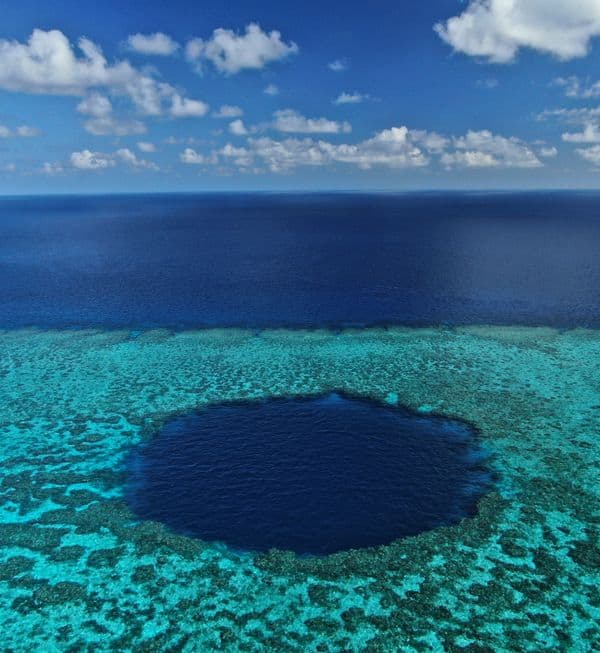
Crystal-Blue-hole. Image courtesy of Johnny Gaskell
About Queensland’s Great Barrier Reef:
The Great Barrier Reef is the world’s biggest coral reef system and the largest living thing on Earth, stretching 2,300 kilometres from the tip of the Cape York Peninsula to Bundaberg. It is Queensland’s most valuable tourism asset with around two million visitors taking trips to the Reef each year. As a custodian of the Reef, Queensland’s tourism industry is committed to responsible practices, as well as actively participating in programs to protect Reef health and build resilience. Anyone who visits the Reef with a commercial operator contributes an Environmental Management Charge of $6.50 per day to the Great Barrier Reef Marine Park Authority, which is vital in supporting day-to-day management of the marine park. In June 2017, Deloitte Access Economics release a report that valued the Great Barrier Reef at A$56billion, with an economic contribution of A$6.4billion per year.
About Johnny Gaskell:
As a child, Johnny Gaskell spent hours studying the fish and river animals near his home in Bendigo. Then he discovered the ocean and after a few years studying science and fisheries management, he started his career as a tour and dive guide. Soon after, he moved to the heart of the Great Barrier Reef – the Whitsundays – and has never looked back.
Now, as Daydream Island’s Master Reef Guide and resident marine biologist, Johnny looks after one of the world’s largest man-made living coral reef lagoons. A job that, more often than not, requires him to ‘wetsuit up’ and head out with enthusiastic snorkelers and divers onto the Great Barrier Reef.
For more personalised information, tips and advice, or to book an incredible holiday contact your local TravelManagers’ personal travel manager.
With compliments of First Class: visit them online or at Instagram

